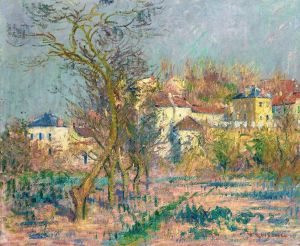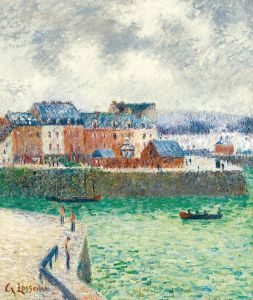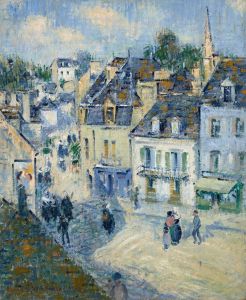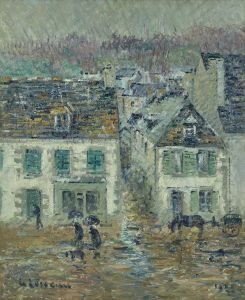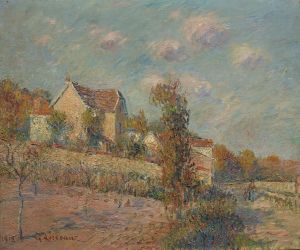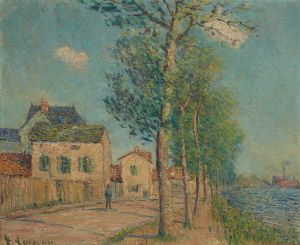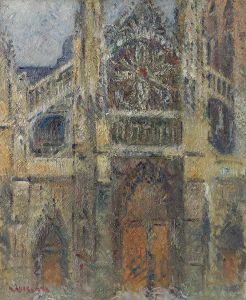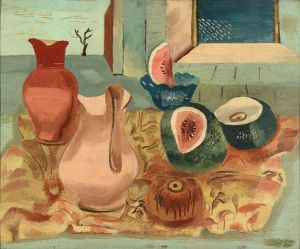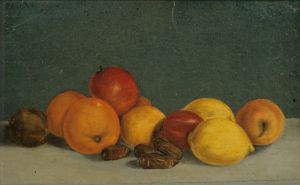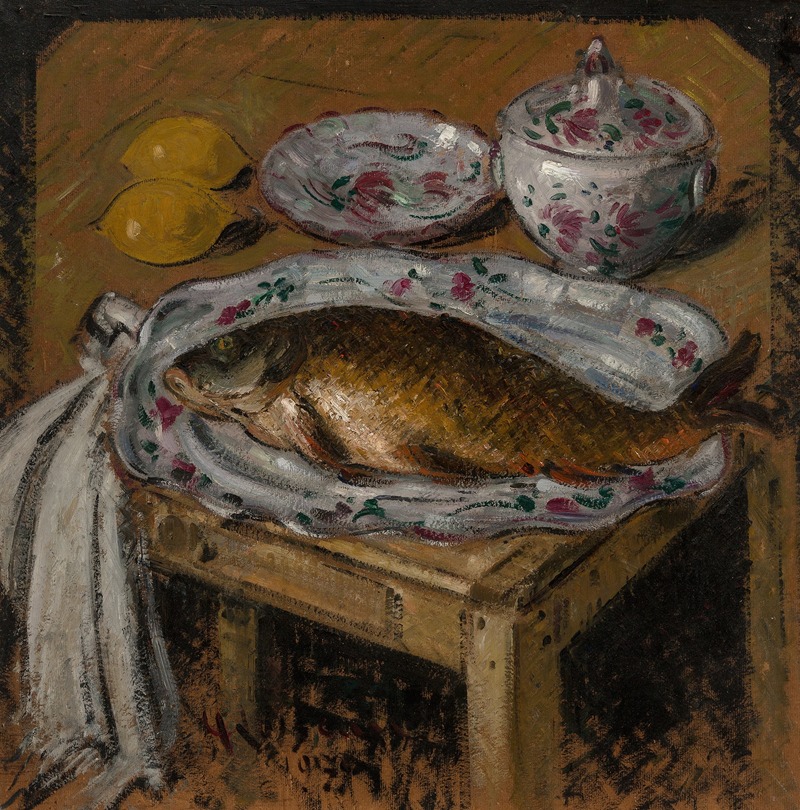
La carpe
A hand-painted replica of Gustave Loiseau’s masterpiece La carpe, meticulously crafted by professional artists to capture the true essence of the original. Each piece is created with museum-quality canvas and rare mineral pigments, carefully painted by experienced artists with delicate brushstrokes and rich, layered colors to perfectly recreate the texture of the original artwork. Unlike machine-printed reproductions, this hand-painted version brings the painting to life, infused with the artist’s emotions and skill in every stroke. Whether for personal collection or home decoration, it instantly elevates the artistic atmosphere of any space.
Gustave Loiseau (1865-1935) was a French Post-Impressionist painter known for his landscapes and scenes of rural life. One of his notable works is "La Carpe" (The Carp), which exemplifies his distinctive style and technique.
"La Carpe" is a painting that captures a serene and picturesque scene, likely depicting a pond or a riverbank where carp fish are found. Loiseau's work often focused on the natural beauty of the French countryside, and this painting is no exception. His use of color and light reflects the influence of Impressionism, while his brushwork and composition show his unique approach to capturing the essence of the landscape.
Loiseau was born in Paris and initially trained as a decorator before turning to painting. He studied at the École des Beaux-Arts and was influenced by the works of Claude Monet and Alfred Sisley. Loiseau developed a technique known as "en treillis" (latticework), characterized by crisscrossing brushstrokes that create a textured and dynamic surface. This technique is evident in "La Carpe," where the interplay of light and shadow on the water and surrounding foliage is rendered with meticulous detail.
The painting likely dates from the late 19th or early 20th century, a period when Loiseau was actively exhibiting his works at the Salon des Indépendants and the Salon d'Automne in Paris. His works were well-received, and he became associated with the Post-Impressionist movement, which sought to build upon the innovations of Impressionism while exploring new directions in color, form, and composition.
"La Carpe" demonstrates Loiseau's ability to capture the tranquility and beauty of nature. The painting's composition draws the viewer's eye into the scene, inviting them to experience the peacefulness of the moment. The reflections on the water, the lush greenery, and the gentle movement of the fish all contribute to the overall sense of harmony and balance.
Loiseau's work is characterized by its dedication to capturing the changing effects of light and atmosphere. He often painted the same scene at different times of the day or in different seasons, much like Monet. This approach allowed him to explore the nuances of color and light, creating a rich and varied body of work.
"La Carpe" is a testament to Loiseau's skill as a painter and his deep appreciation for the natural world. His ability to convey the subtle beauty of a simple scene speaks to his mastery of the medium and his commitment to his artistic vision. Today, Loiseau's works are held in various public and private collections, and he is remembered as a significant figure in the Post-Impressionist movement.
In summary, "La Carpe" by Gustave Loiseau is a beautiful example of his landscape painting, showcasing his unique technique and his ability to capture the serene beauty of nature. The painting reflects the influence of Impressionism while highlighting Loiseau's individual style and contribution to the Post-Impressionist movement.





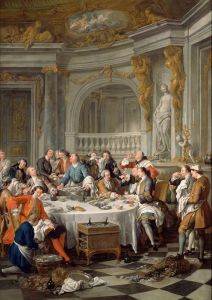
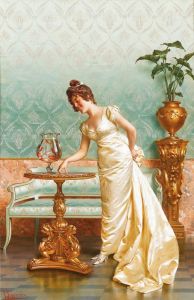
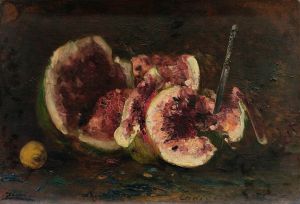

![Designs for Indian Room, Chic-n-Coop Restaurant, Montreal, Canada.] [Placemat design with chicken character wearing crown](/imgs/249244/s/winold-reiss-designs-for-indian-room-chicncoop-restaurant-montreal-canada-placemat-design-with-chicken-character-wearing-crown-67b965b8.jpg)
